
General Sir Redvers Henry Buller, was a British Army officer and a recipient of the Victoria Cross, the highest award for gallantry in the face of the enemy that can be awarded to British and Commonwealth forces. He served as Commander-in-Chief of British Forces in South Africa during the early months of the Second Boer War and subsequently commanded the army in Natal until his return to England in November 1900.
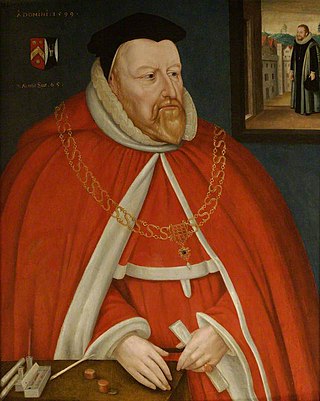
Sir William Peryam of Little Fulford, near Crediton in Devon, was an English judge who rose to the position of Lord Chief Baron of the Exchequer in 1593, and was knighted by Queen Elizabeth I.
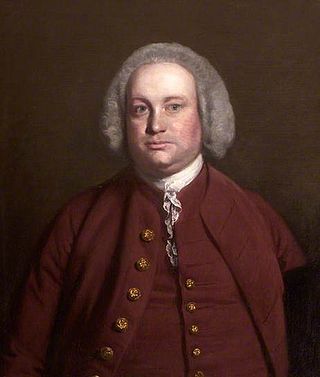
James Buller of Morval in Cornwall and of Downes and King's Nympton in Devon, was a Member of Parliament for East Looe in Cornwall (1741-47) and for the County of Cornwall (1748-1765). He was ancestor of the Viscounts Dilhorne and the Barons Churston and built the Palladian mansion Kings Nympton Park in Devon.
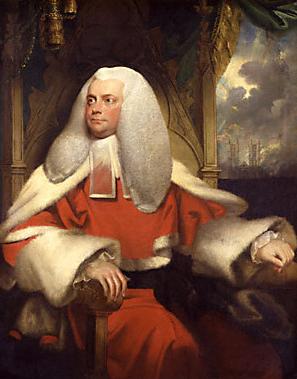
Sir Francis Buller, 1st Baronet of Churston Court in the parish of Churston Ferrers, of nearby Lupton in the parish of Brixham, and of Prince Hall on Dartmoor, all in Devon, was an English judge.

James Wentworth Buller of Downes, Crediton, Devon, was a British Whig Member of Parliament for Exeter, in Devon, from 1830 to 1835, and for North Devon from 1857 to 1865.

John Buller (1632–1716) was an English politician who sat in the House of Commons variously between 1656 and 1695.

The Manor of King's Nympton was a manor largely co-terminous with the parish of King's Nympton in Devon, England.

Lupton is an historic manor in the parish of Brixham, Devon. The surviving manor house known as Lupton House, is a Palladian Country house built by Charles II Hayne (1747–1821), Sheriff of Devon in 1772 and Colonel of the North Devon Militia. It received a Grade II* listing in 1949. The park and gardens are Grade II* listed in the National Register of Historic Parks and Gardens.
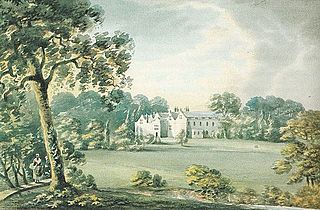
Little Fulford was an historic estate in the parishes of Shobrooke and Crediton, Devon. It briefly share ownership before 1700 with Great Fulford, in Dunsford, about 9 miles (14 km) to the south-west. The Elizabethan mansion house originally called Fulford House was first built by Sir William Peryam (1534-1604), a judge and Lord Chief Baron of the Exchequer. It acquired the diminutive epithet "Little" in about 1700 to distinguish it from Fulford House, Dunsford and was at some time after 1797 renamed Shobrooke House, to remove all remaining confusion between the two places. Peryam's mansion was demolished in 1815 and a new house erected on a different site away from the River Creedy. This new building was subsequently remodelled in 1850 in an Italianate style. It was destroyed by fire in 1945 and demolished, with only the stable block remaining today. The landscaped park survives, open on the south side to the public by permissive access, and crossed in parts by public rights of way, with ancient large trees and two sets of ornate entrance gates with a long decorative stone multiple-arched bridge over a large ornamental lake. The large pleasure garden survives, usually closed to the public, with walled kitchen garden and stone walls and balustrades of terraces. The park and gardens are Grade II listed in the National Register of Historic Parks and Gardens. The estate was the home successively of the families of Peryam, Tuckfield, Hippisley and lastly the Shelley baronets, in whose possession it remains today.

Peamore is a historic country estate in the parish of Exminster, Devon, which is near the city of Exeter. In 1810 Peamore House was described as "one of the most pleasant seats in the neighbourhood of Exeter". The house was remodelled in the early 19th century and is now a grade II listed building.

John Peryam, of Exeter, Devon, was elected four times as a Member of Parliament, for Barnstaple 1584, Bossiney 1586, Exeter 1589 and 1593. He served as Mayor of Exeter. He was the younger brother of Sir William Peryam (1534-1604) of Little Fulford, near Crediton in Devon, Lord Chief Baron of the Exchequer.

Creedy is an historic estate in the parish of Sandford, near Crediton in Devon. It is named from its location on the west side of the River Creedy. It was the seat of the Davie family from about 1600 until the late 20th century. The mansion house on the estate has been called at various times New House, Creedy House, and as presently, Creedy Park. It was first built in about 1600, rebuilt in 1846, burnt down in 1915 and rebuilt 1916–21. It is surrounded by a large park, the boundary of which is enclosed by a stone and brick wall several miles long.

Edward Yarde (1669–1735), of Churston Court in the parish of Churston Ferrers in Devon was a Member of Parliament for Totnes in Devon 1695-1698.
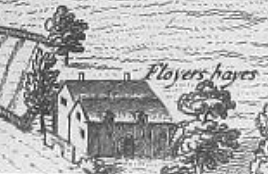
Floyer Hayes was an historic manor in the parish of St Thomas on the southern side of the City of Exeter in Devon, England, from which city it is separated by the River Exe. It took its name from the ancient family of Floyer which held it until the early 17th century, when it was sold to the Gould family. In the 19th century the estate was divided up and the manor house demolished. The parish church of St Thomas, situated a short distance to the west of the house, was burned down in 1645 during the Civil War, and was rebuilt before 1657. Thus no monuments survive there of early lords of the manor, namely the Floyer family.
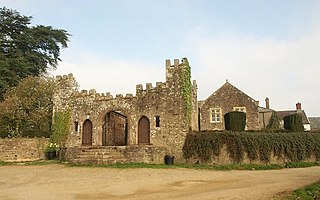
Dowrich is an historic estate in the parish of Sandford, on the River Creedy, three miles north-east of Crediton in Devon, England. Between the 12th century and 1717 it was the seat of the ancient gentry family of Dowrish which took its name from the estate where it had become established before the reign of King John (1199–1216), when it built a castle keep on the site. A 15th century gatehouse survives there today, next to the ancient mansion house.
Trethurffe is an historic estate in the parish of Ladock, near Truro, in Cornwall.
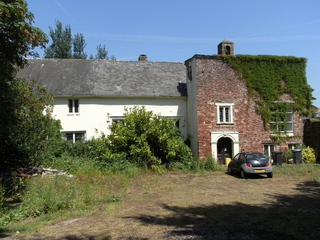
Blagdon historically in the parish of Paignton in Devon, England (today in the parish of Collaton St Mary), is an historic manor, the seat of the Kirkham family from the 13th to 17th centuries. The manor house known as Blagdon Manor (House) (or Blagdon Barton) survives as a grade II* listed building about two miles west of the historic centre of the town of Paignton, situated behind the "Blagdon Inn" public house (former stables), and almost surrounded by the "Devon Hills Holiday Park" of caravans and mobile homes, set-back at the end of a short driveway off the A385 Paignton to Totnes road. The settlements or farms of Higher Blagdon, Middle Blagdon and Lower Blagdon are situated to the north of the manor house.

Hayne in the parish of Stowford in Devon, is an historic manor, about 11 miles (18 km) south-west of Okehampton. The surviving manor house, a Grade II* listed building known as Hayne House, was rebuilt in about 1810 by Isaac Donnithorne, who later adopted the surname Harris having married the heiress of Harris of Hayne.

Radford in the parish of Plymstock in Devon is a historic manor and the oldest recorded seat of the prominent Harris family. It is today a low-cost housing suburb of the City of Plymouth. The 16th century manor house of the Harris family was remodelled in the 18th century and was demolished in 1937. However, various traces of the estate remain, including most notably the deerpark, now a public amenity known as Radford Park, with its large lake, an early 19th century gate-lodge at the entrance drive to the former mansion house, with gatepiers, on Radford Park Road, a bridge and boathouse with follies of a sham castle and another sham-ruin.





















